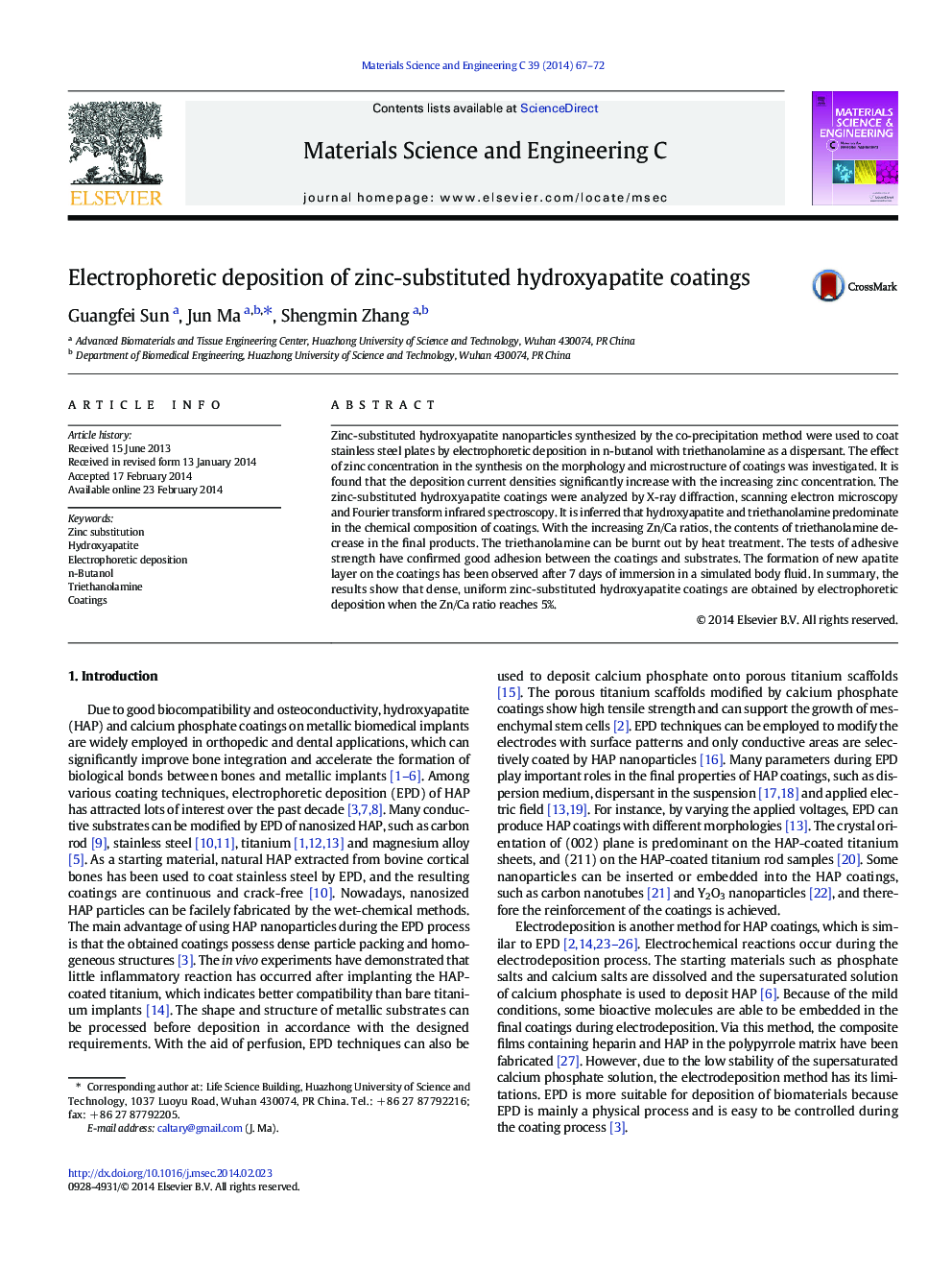| Article ID | Journal | Published Year | Pages | File Type |
|---|---|---|---|---|
| 1428764 | Materials Science and Engineering: C | 2014 | 6 Pages |
•We investigate the Zn/Ca ratios for the synthesis of zinc-substituted HA.•Zinc-substituted HA nanoparticles are used for electrophoretic deposition.•Adding triethanolamine and HCl may aid electrophoretic deposition.•Uniform dense coatings of zinc-substituted HA are obtained when Zn/Ca = 5%.
Zinc-substituted hydroxyapatite nanoparticles synthesized by the co-precipitation method were used to coat stainless steel plates by electrophoretic deposition in n-butanol with triethanolamine as a dispersant. The effect of zinc concentration in the synthesis on the morphology and microstructure of coatings was investigated. It is found that the deposition current densities significantly increase with the increasing zinc concentration. The zinc-substituted hydroxyapatite coatings were analyzed by X-ray diffraction, scanning electron microscopy and Fourier transform infrared spectroscopy. It is inferred that hydroxyapatite and triethanolamine predominate in the chemical composition of coatings. With the increasing Zn/Ca ratios, the contents of triethanolamine decrease in the final products. The triethanolamine can be burnt out by heat treatment. The tests of adhesive strength have confirmed good adhesion between the coatings and substrates. The formation of new apatite layer on the coatings has been observed after 7 days of immersion in a simulated body fluid. In summary, the results show that dense, uniform zinc-substituted hydroxyapatite coatings are obtained by electrophoretic deposition when the Zn/Ca ratio reaches 5%.
Graphical abstractFigure optionsDownload full-size imageDownload as PowerPoint slide
